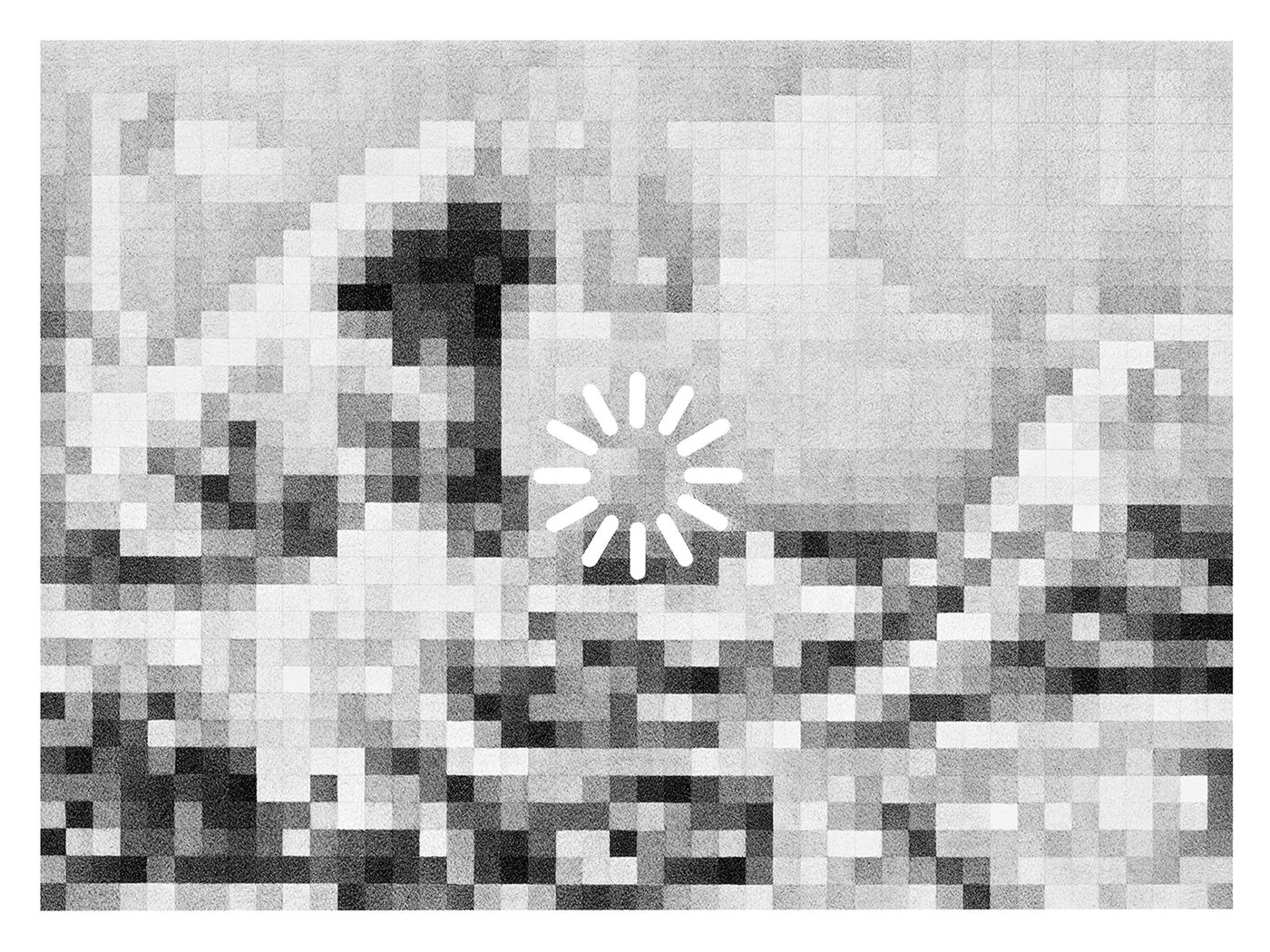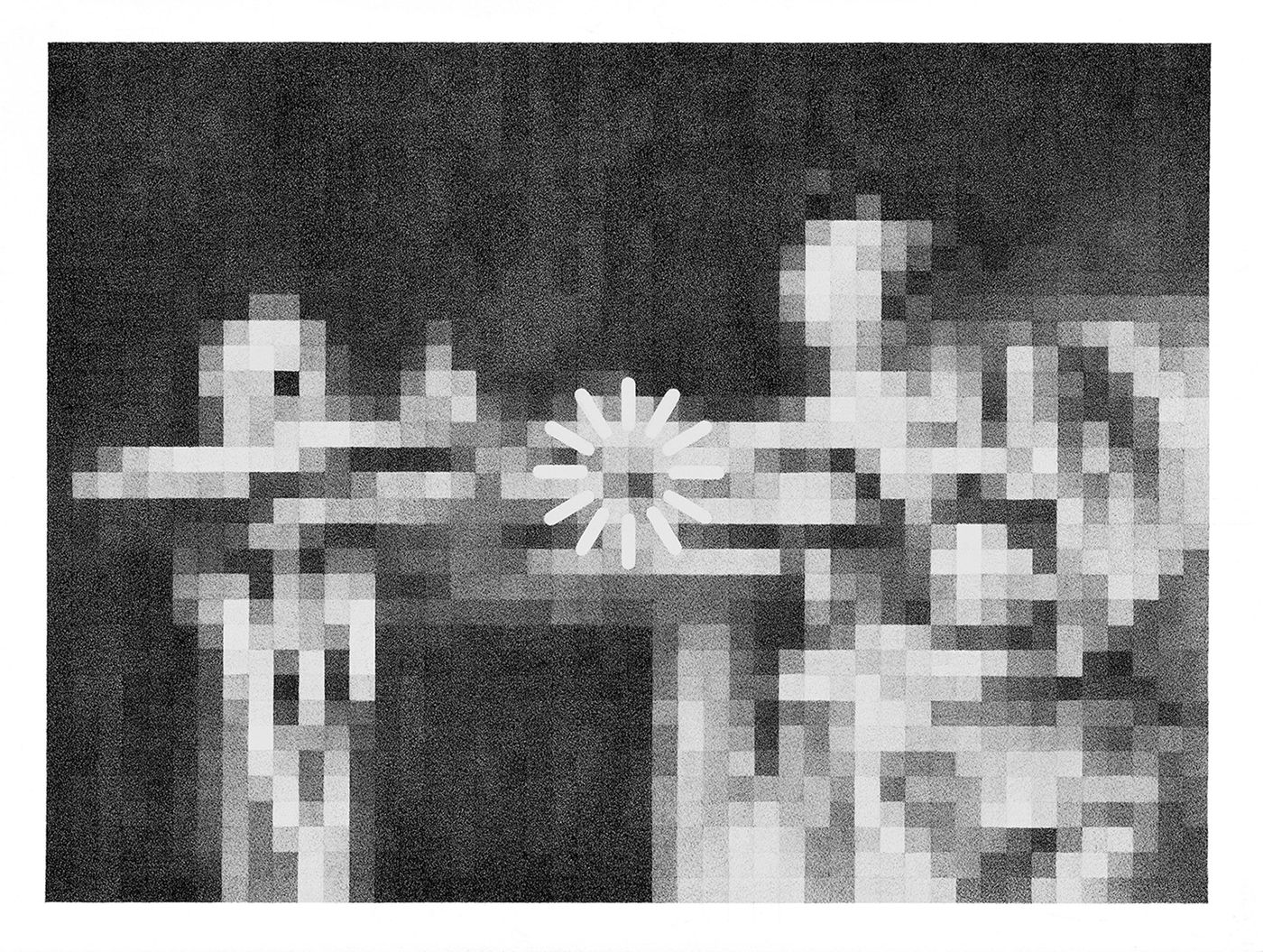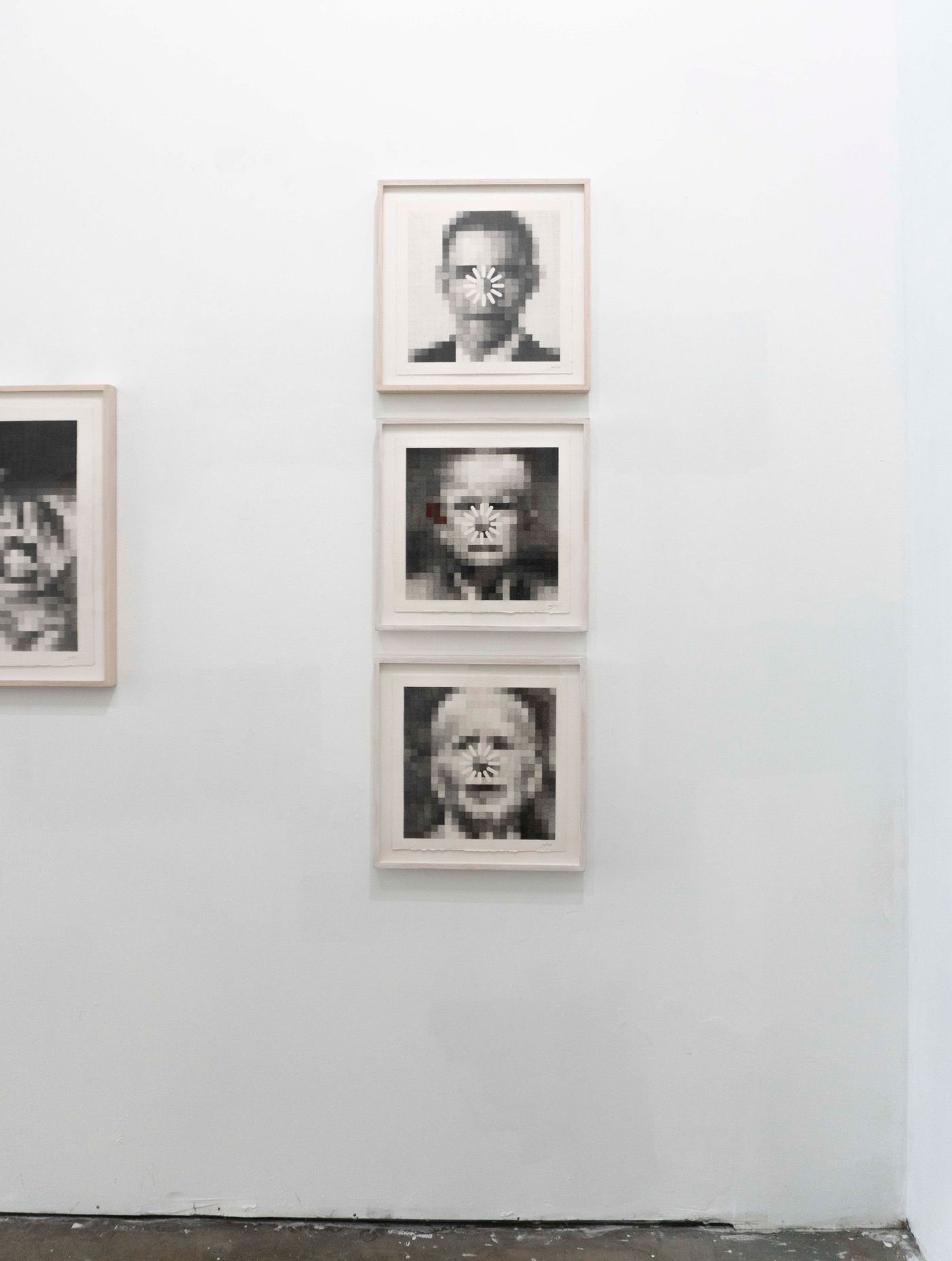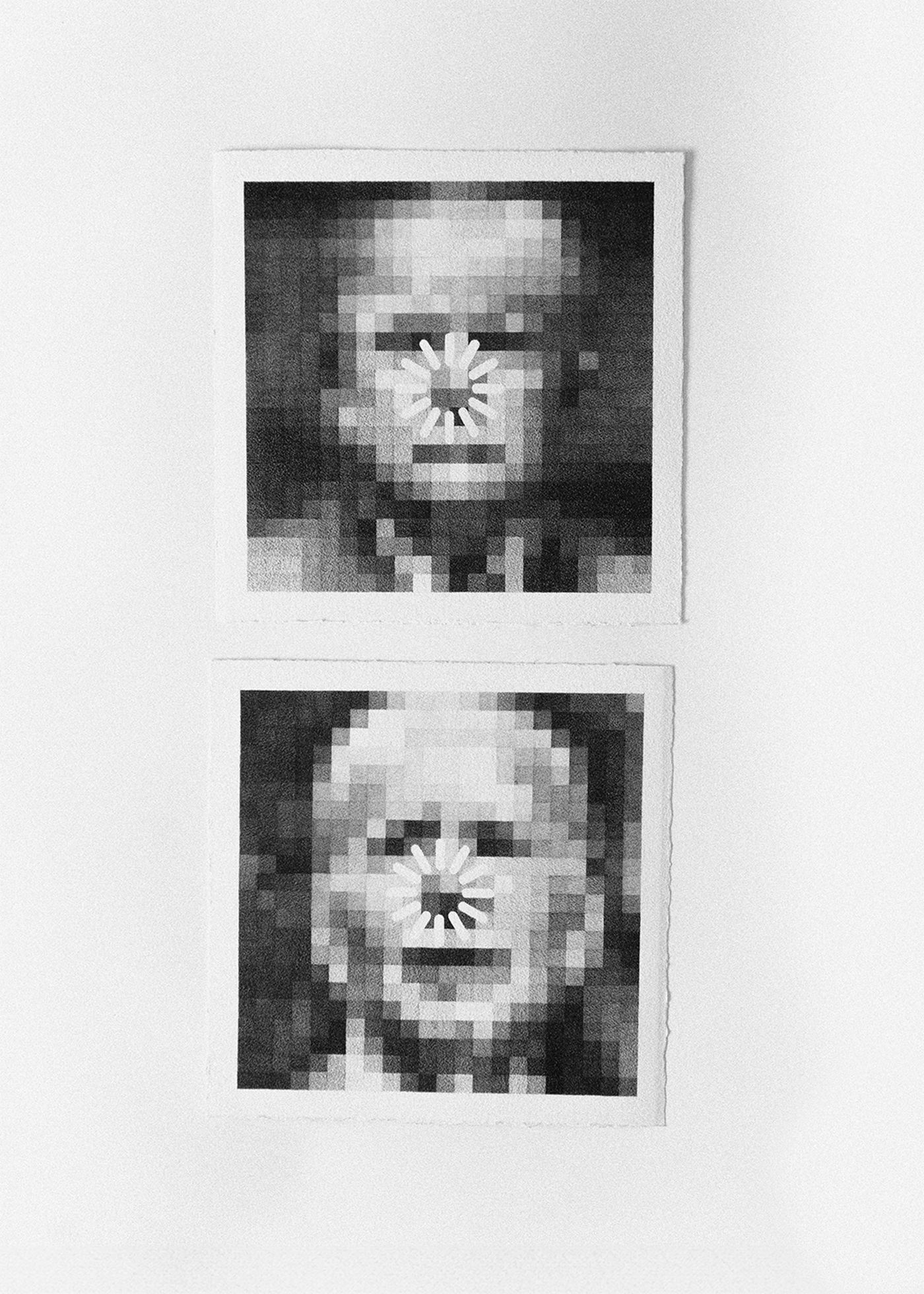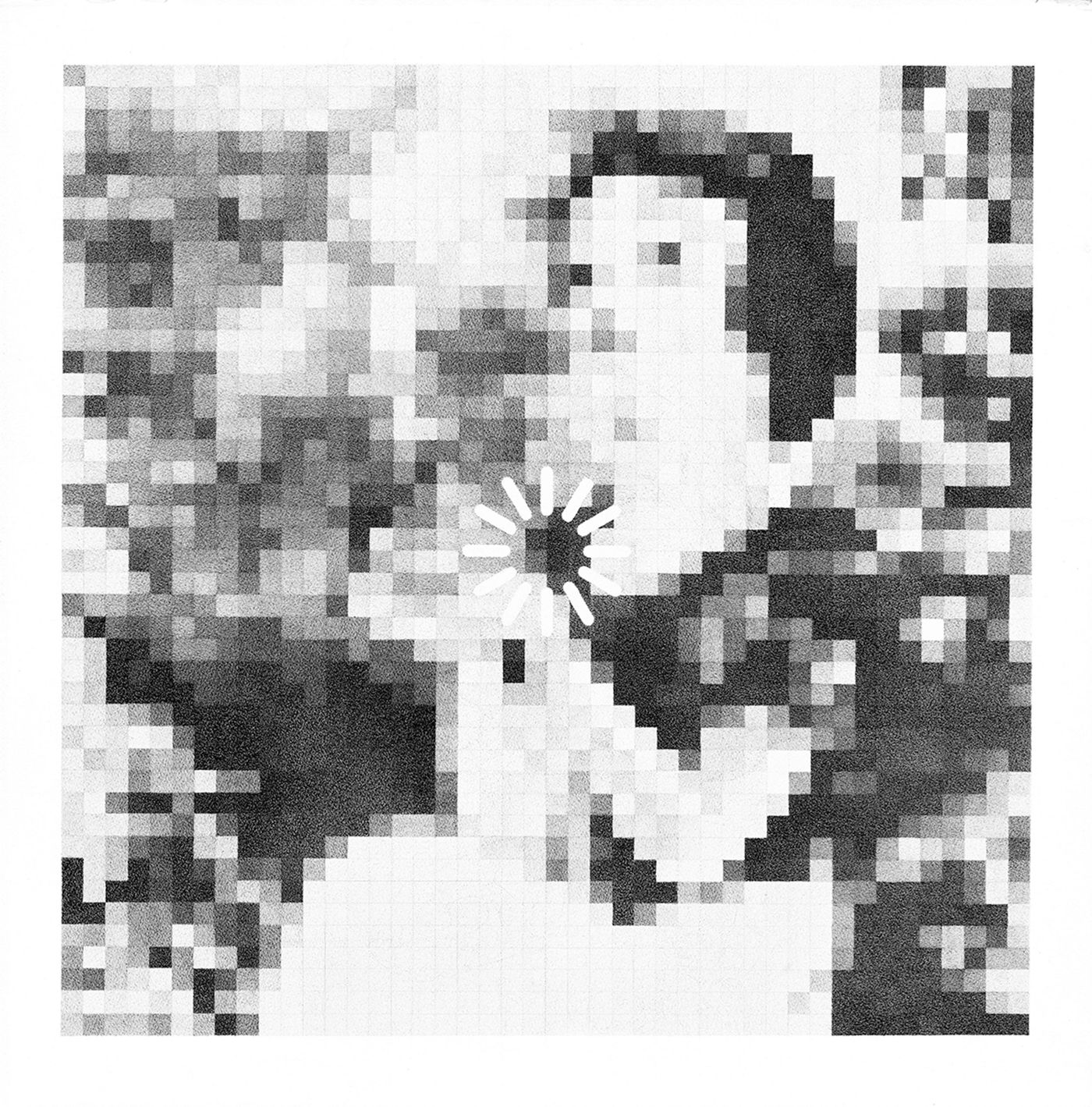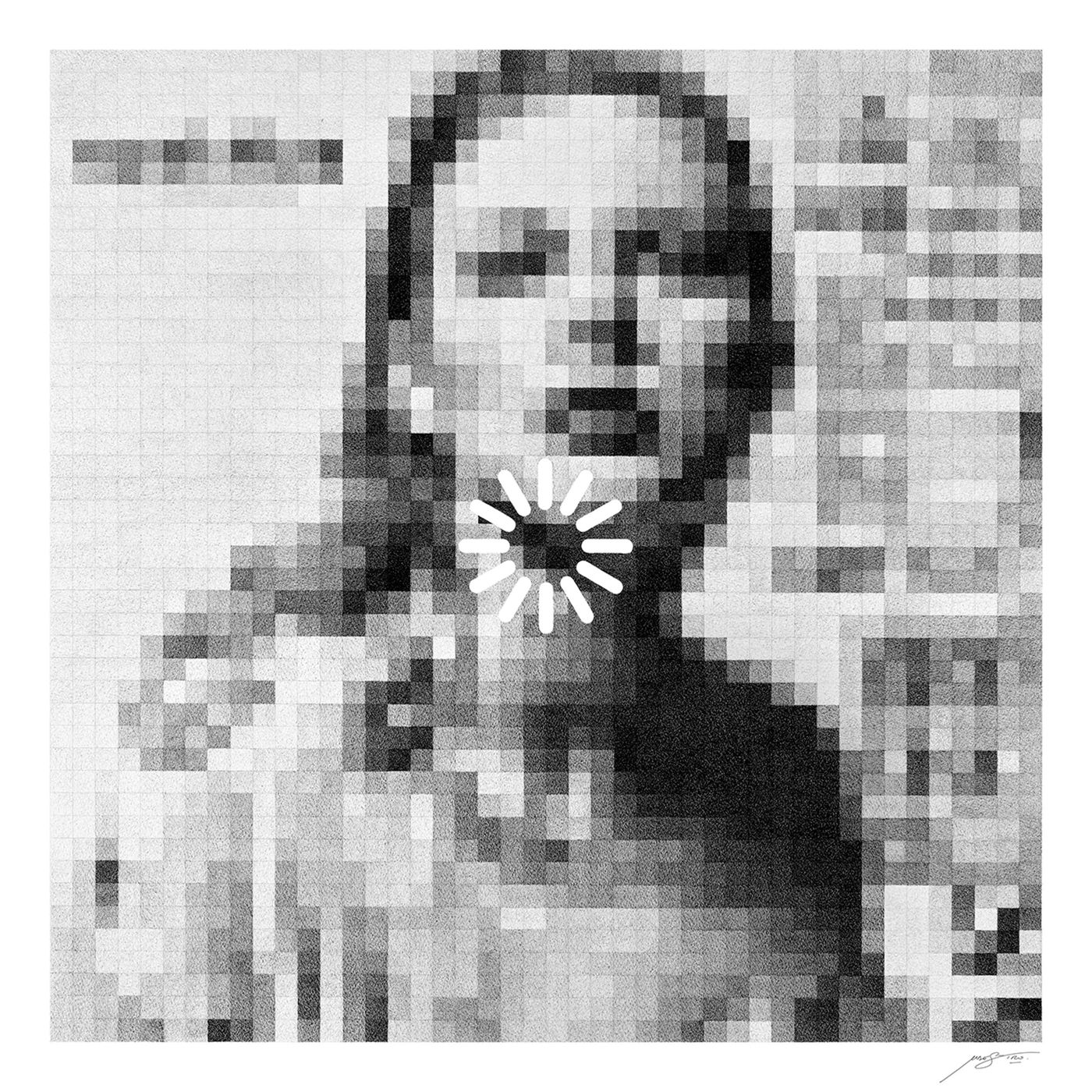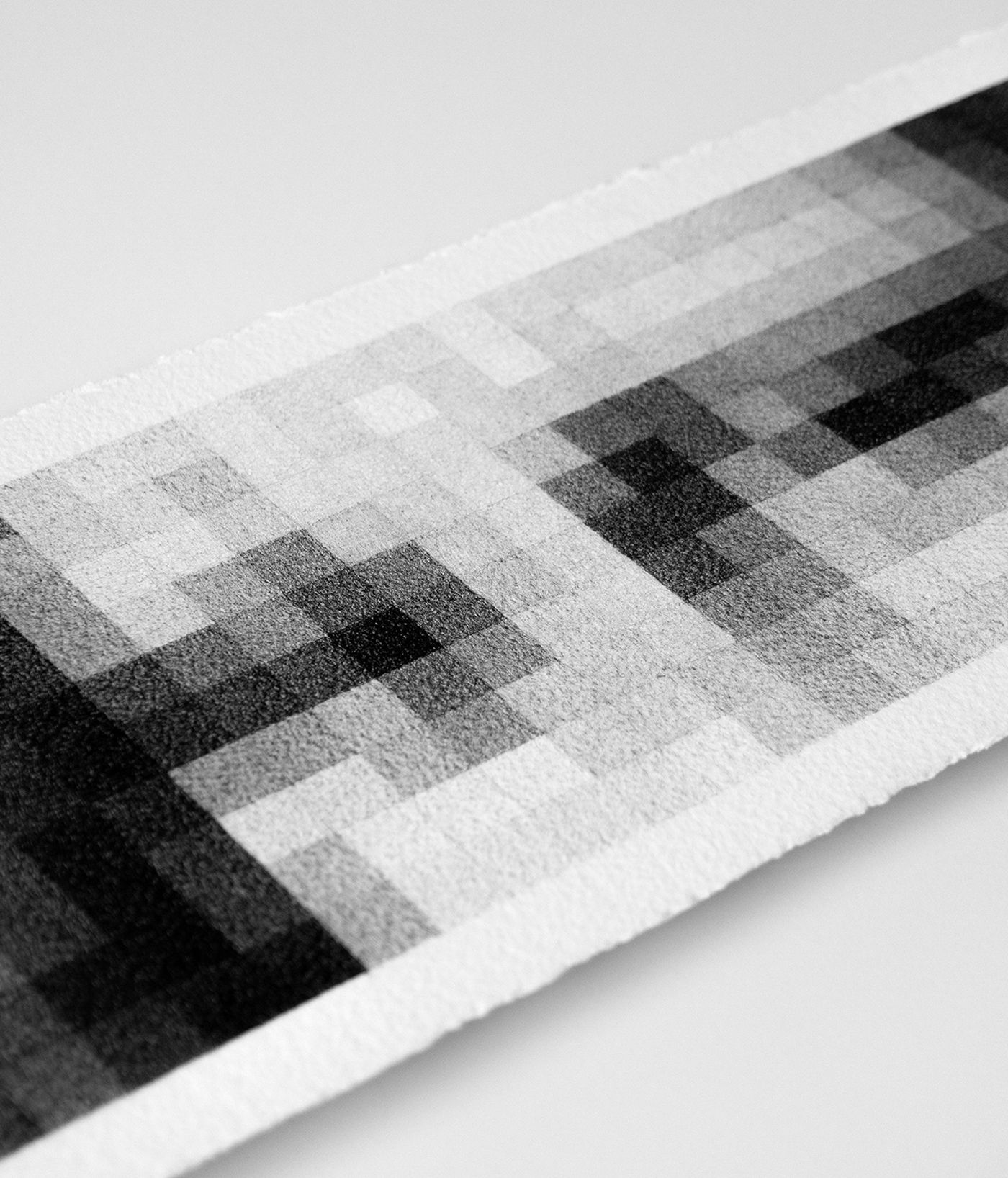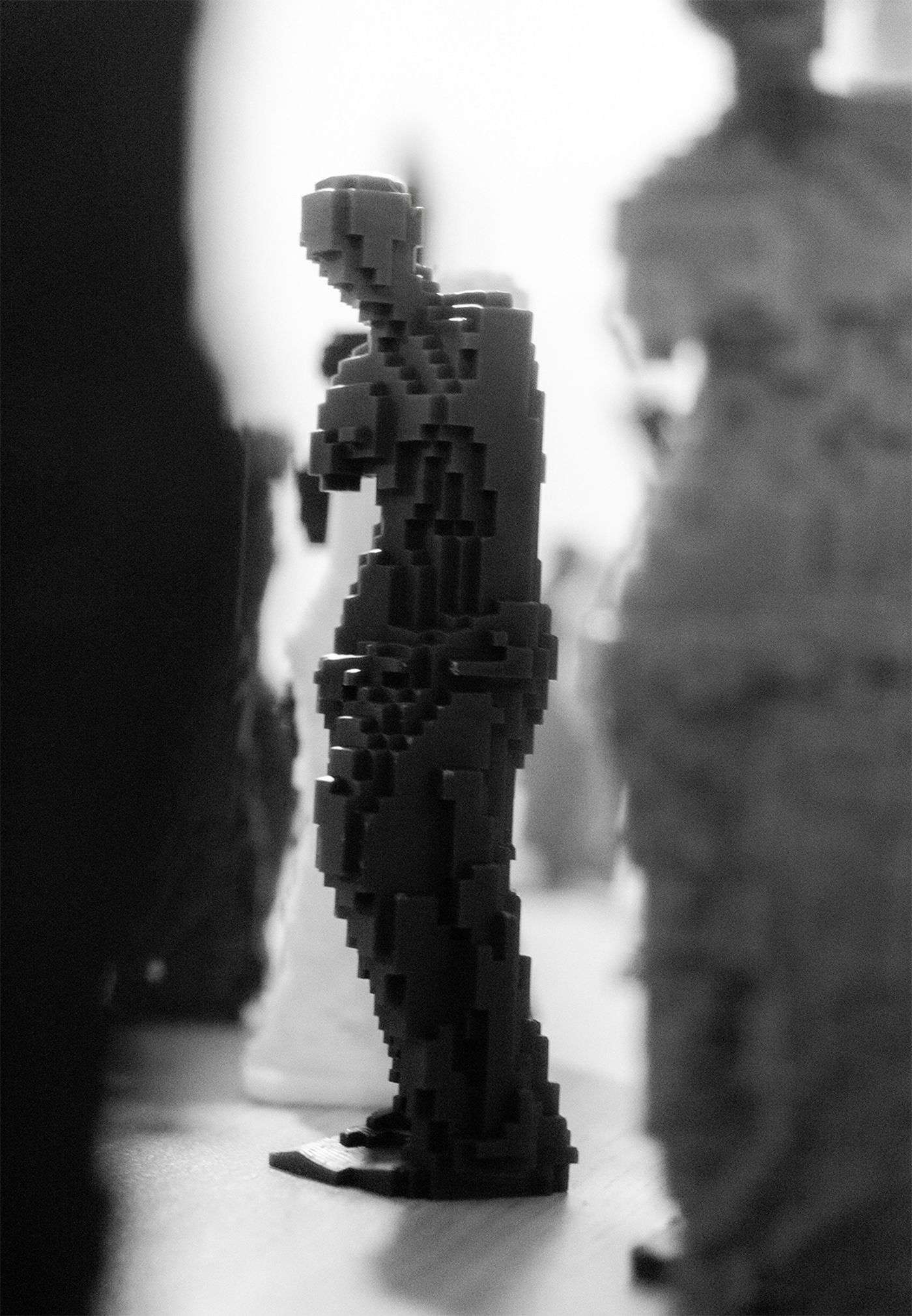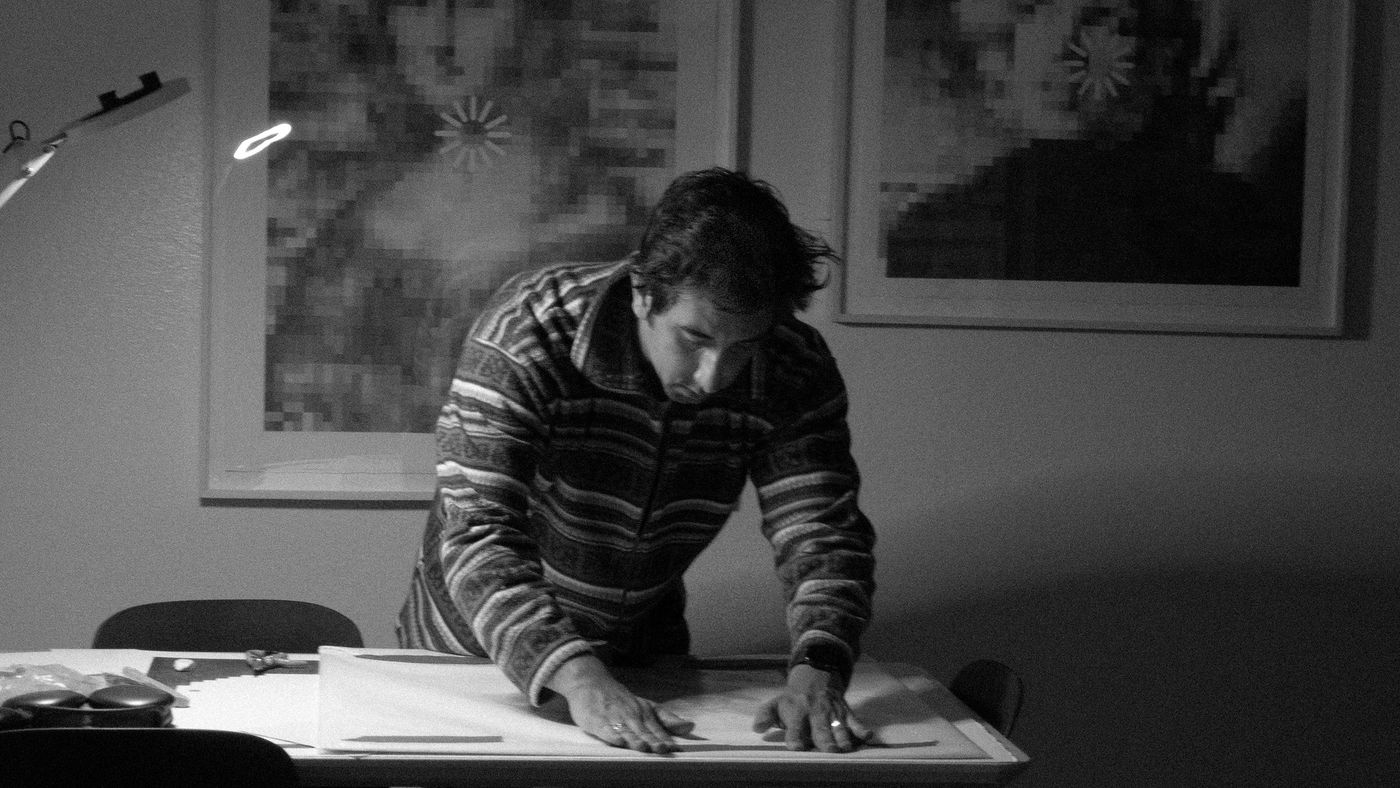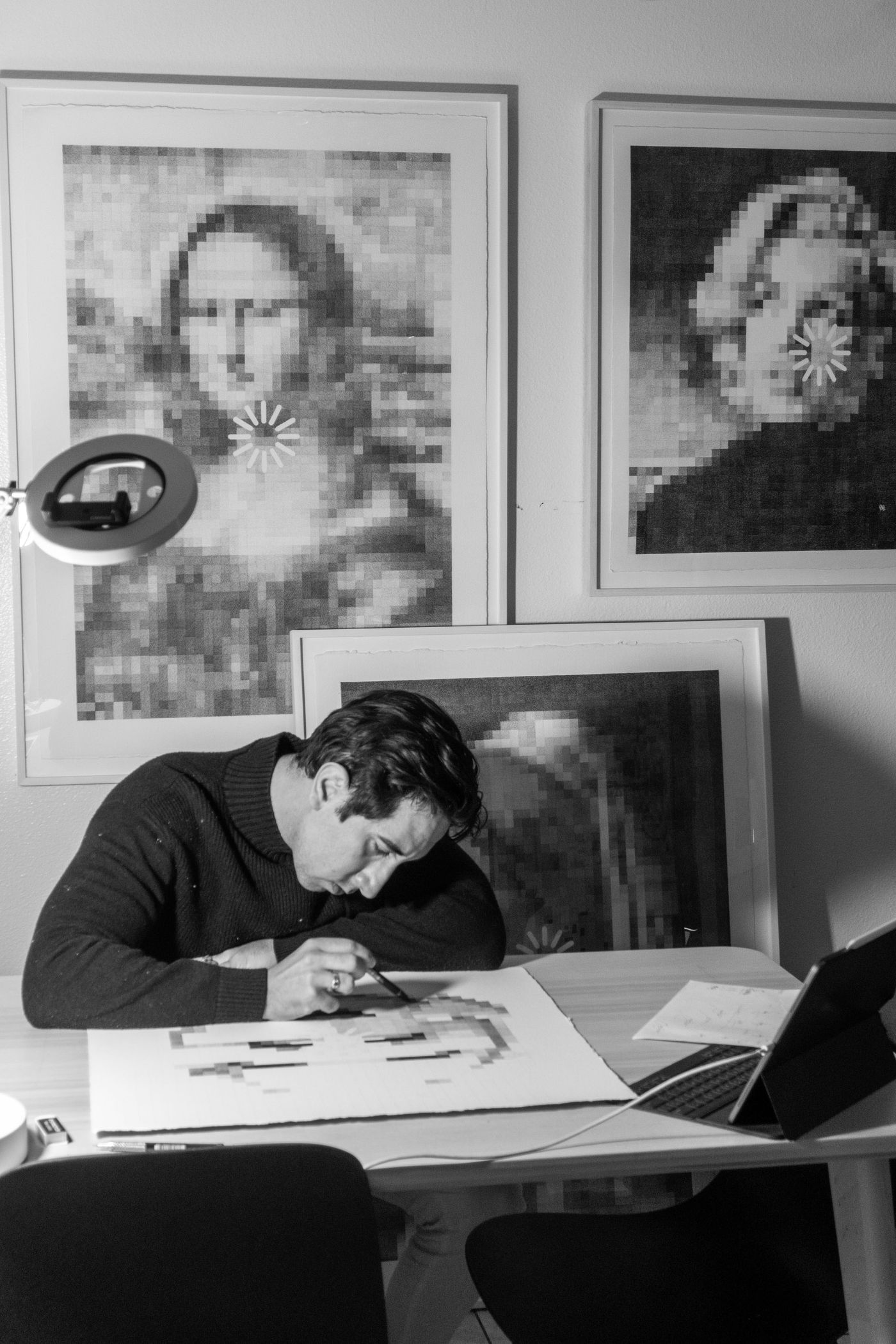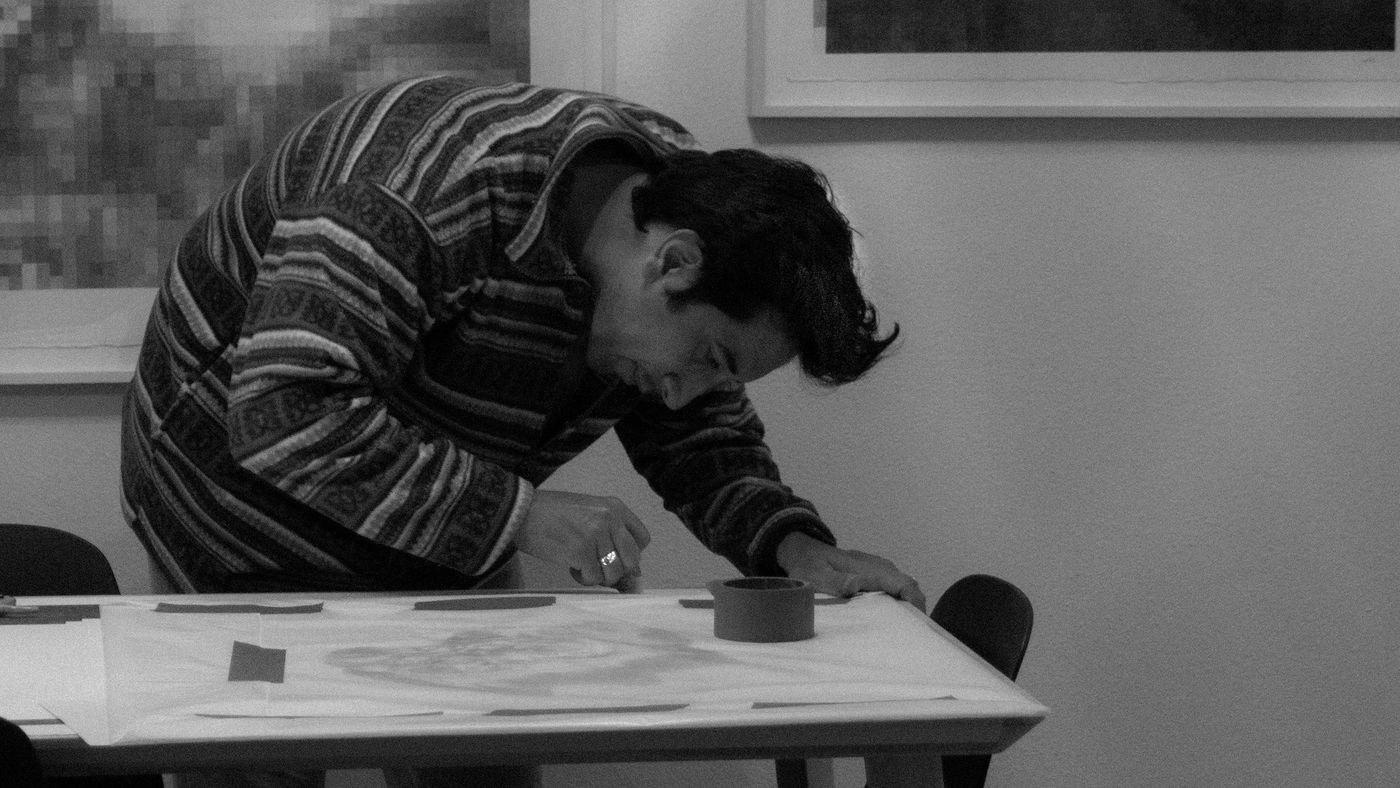
One Pixel at a Time: MAESTRO’s “LOADING” Series Lands in Washington D.C.
Words by Eric David
Location
Washington D.C., USA
One Pixel at a Time: MAESTRO’s “LOADING” Series Lands in Washington D.C.
Words by Eric David
Washington D.C., USA
Washington D.C., USA
Location
Known for his hyperrealistic, black and white pen drawings, Spanish-born, California-based artist MAESTRO has spent the past three years challenging how we consume and interpret imagery in the digital age. His latest series, LOADING, presents pixelated renditions of classical and pop culture icons, all frozen in a perpetual state of digital limbo. From Da Vinci’s Mona Lisa and Vermeer’s Girl with a Pearl Earring to Marilyn Monroe, Disney’s Snow White, and the Statue of Liberty, these are images we’ve seen a thousand times, but never quite like this. Rendered as grids of arrested motion—stuck, stuttering, half-formed, and eternally “loading,” as signalled by the artist’s meticulously hand-drawn buffering icons—they poignantly capture the fragmentation and sensory overload of our digitized visual culture.
On view at HOMME Gallery in Washington D.C. through April 24th, 2025, MAESTRO’s debut solo exhibition invites viewers to engage with the work in person. While the drawings resonate powerfully on screens, it’s only when you stand before them—coming in and out of focus as you step closer or pull back—that their full complexity unfolds.

Artist portrait.
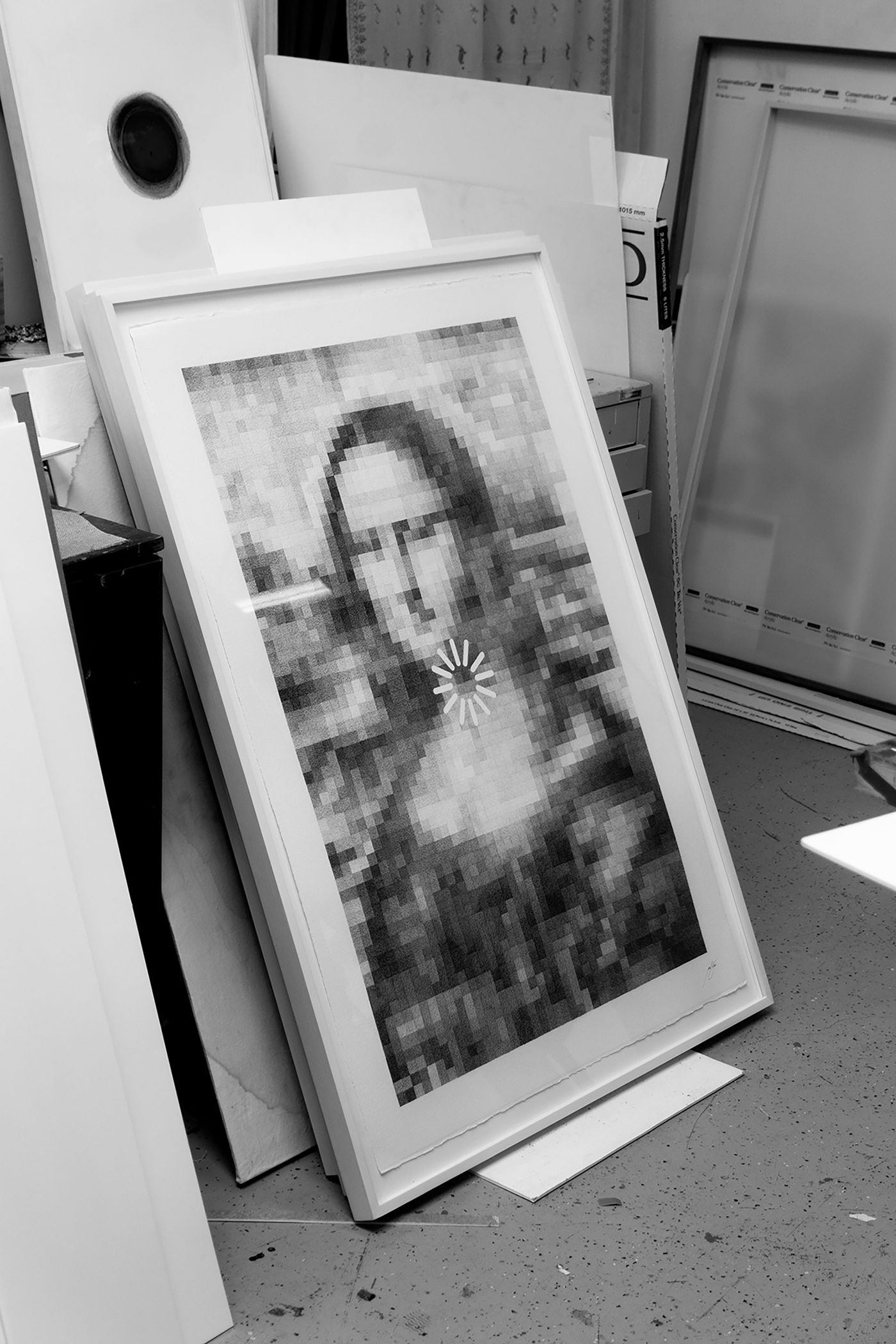
Maestro, Loading Mona Lisa. Photography by Maestro.
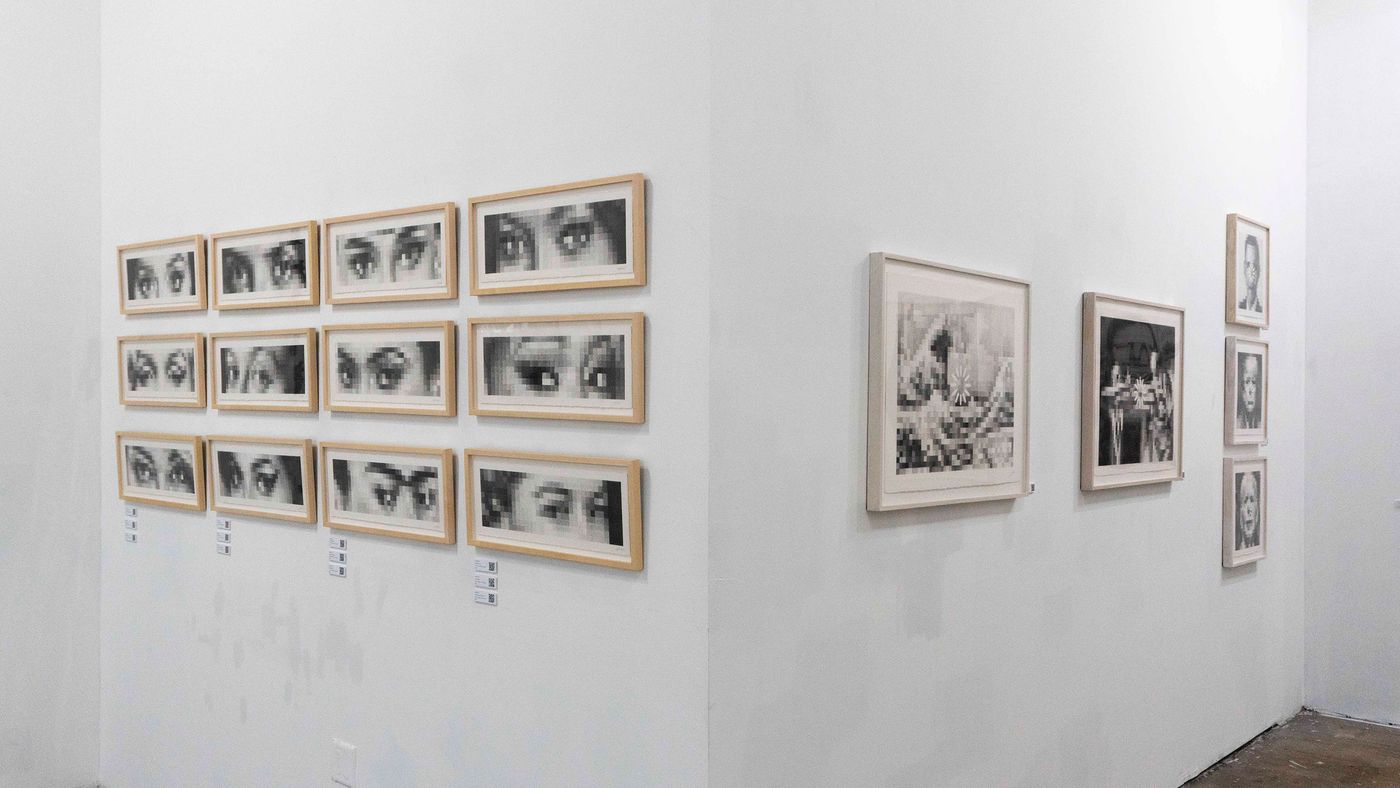
Exhibition view, Loading by Maestro. © Maestro
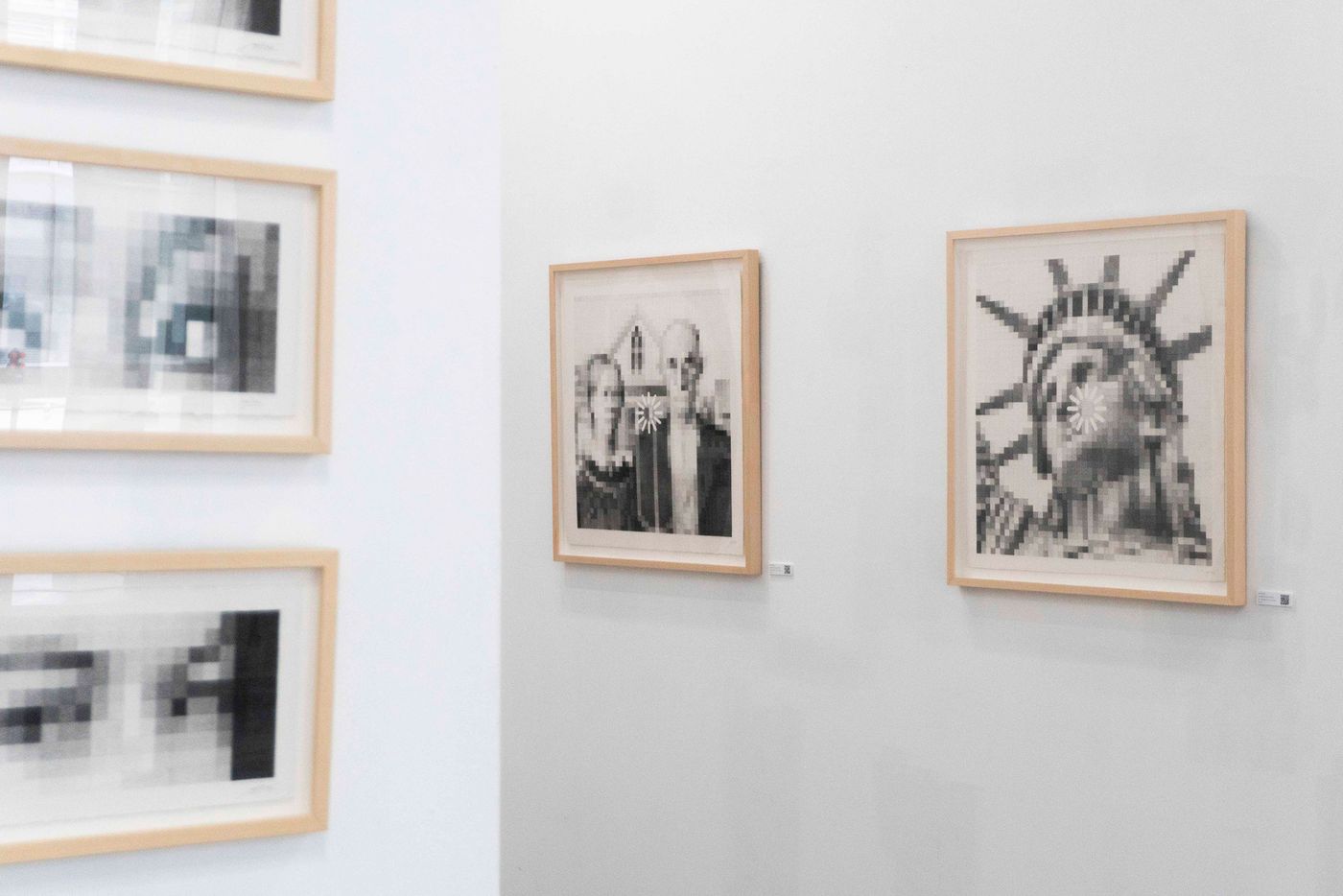
Exhibition view, Loading by Maestro at HOMME Gallery, Washington DC, Apr 3 – 24, 2025. Photography by Maestro.
An architect by training, MAESTRO’s signature visual language didn’t emerge from a conventional creative arc but one born from frustration—and, perhaps more fittingly, a cheap phone plan. After immigrating to the U.S. in 2021 in order to advance his architecture career, he found himself staring at endlessly buffering images on his smartphone. Rather than swipe past, he paused. Then he began drawing. And what began as a meditative exercise in pixelation soon evolved into a rigorous artistic practice blending architecture, art history, and cultural critique.
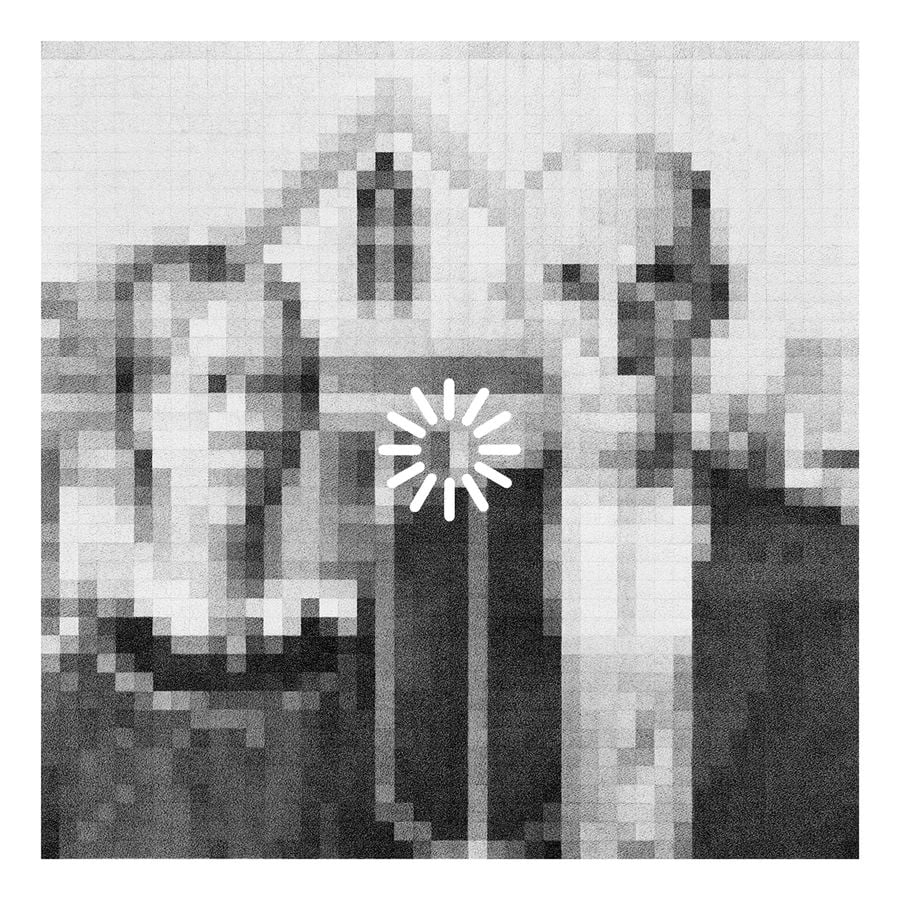
Maestro, Loading American Gothic. Photography by Maestro.
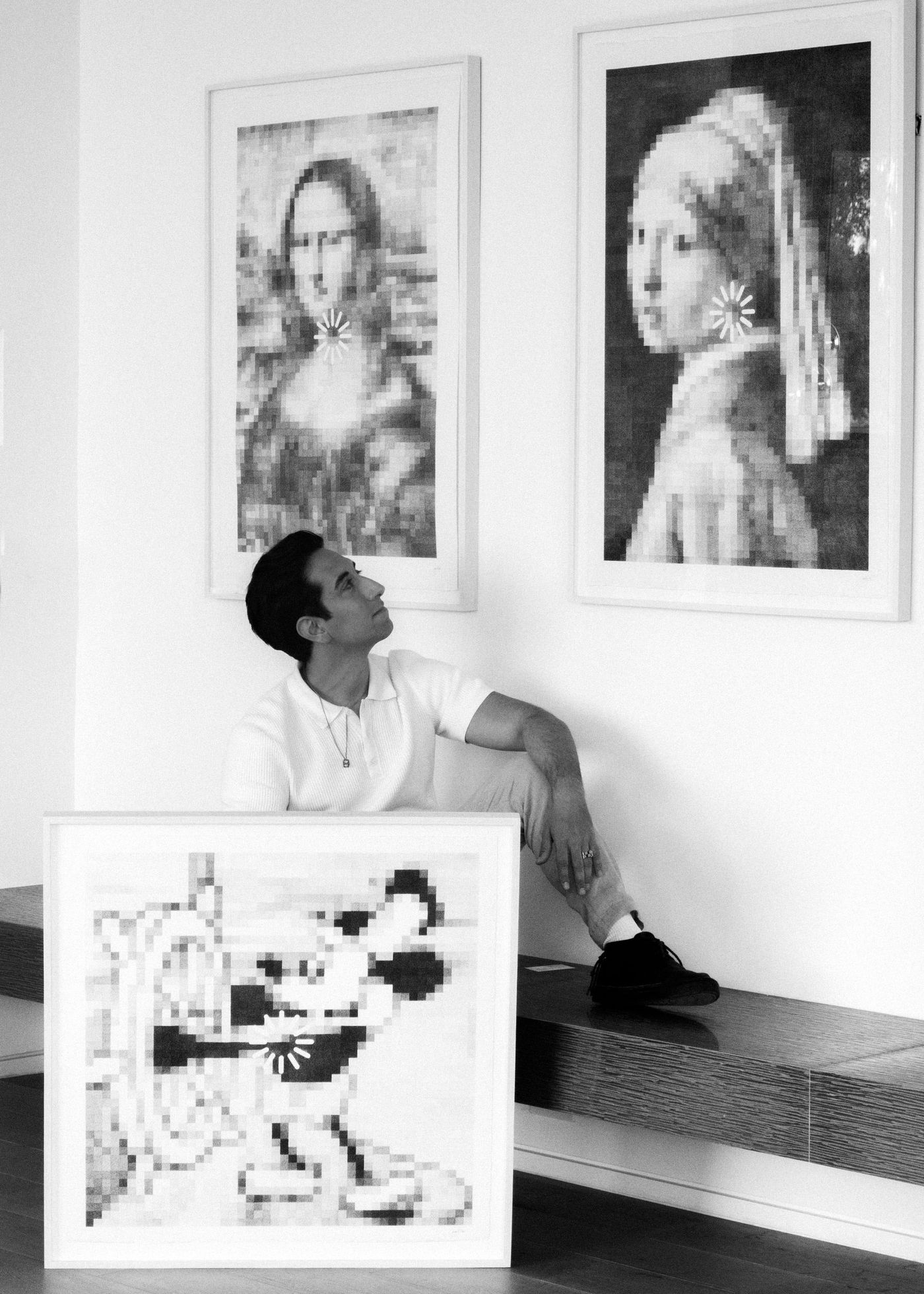
Artist portrait at a show in a Beverly Hills residence.

Maestro, Loading Pearl Earring. Photography by Maestro.

Exhibition view, Loading by Maestro at HOMME Gallery, Washington DC, Apr 3 – 24, 2025. Photography by Maestro.
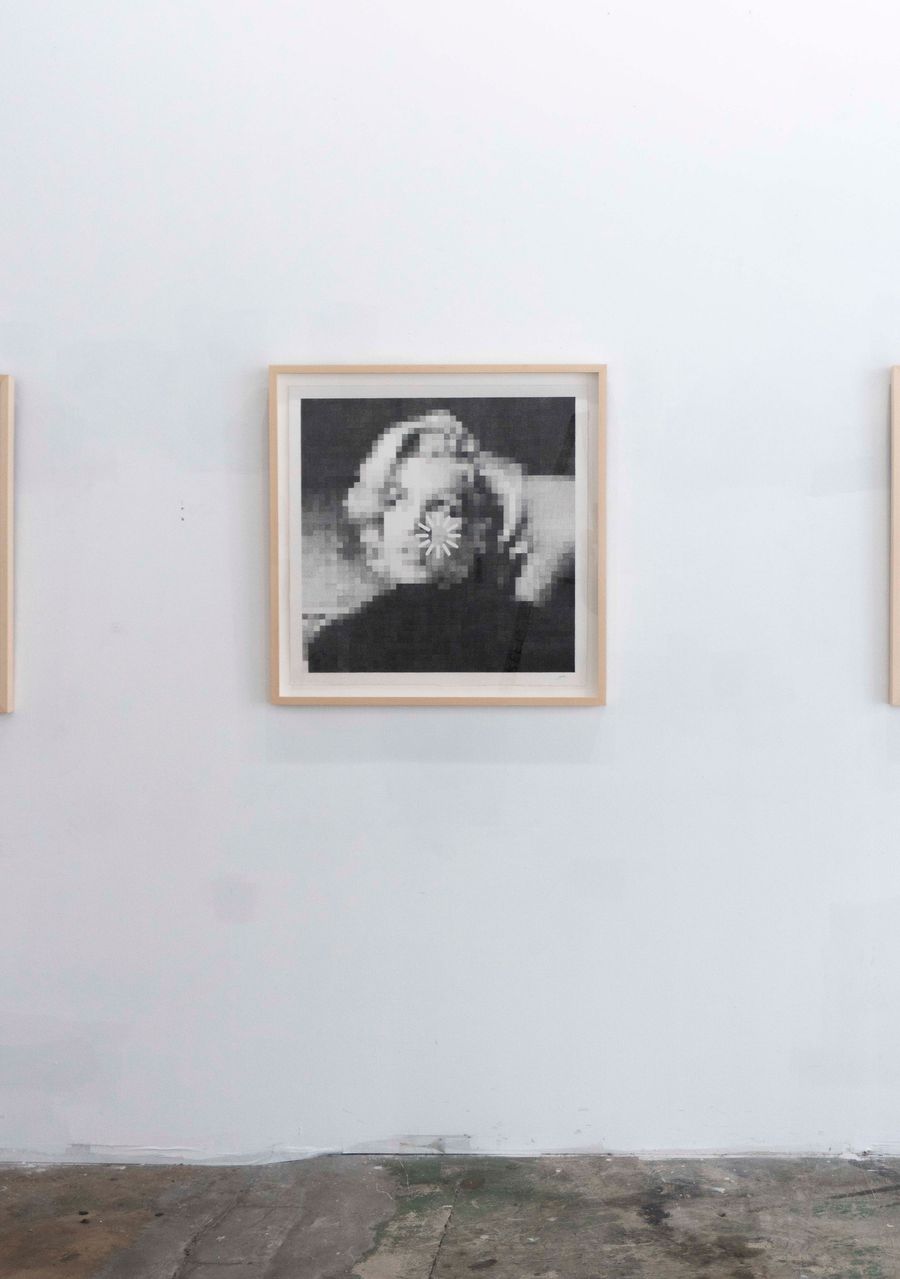
Exhibition view, Loading by Maestro at HOMME Gallery, Washington DC, Apr 3 – 24, 2025. Photography by Maestro.
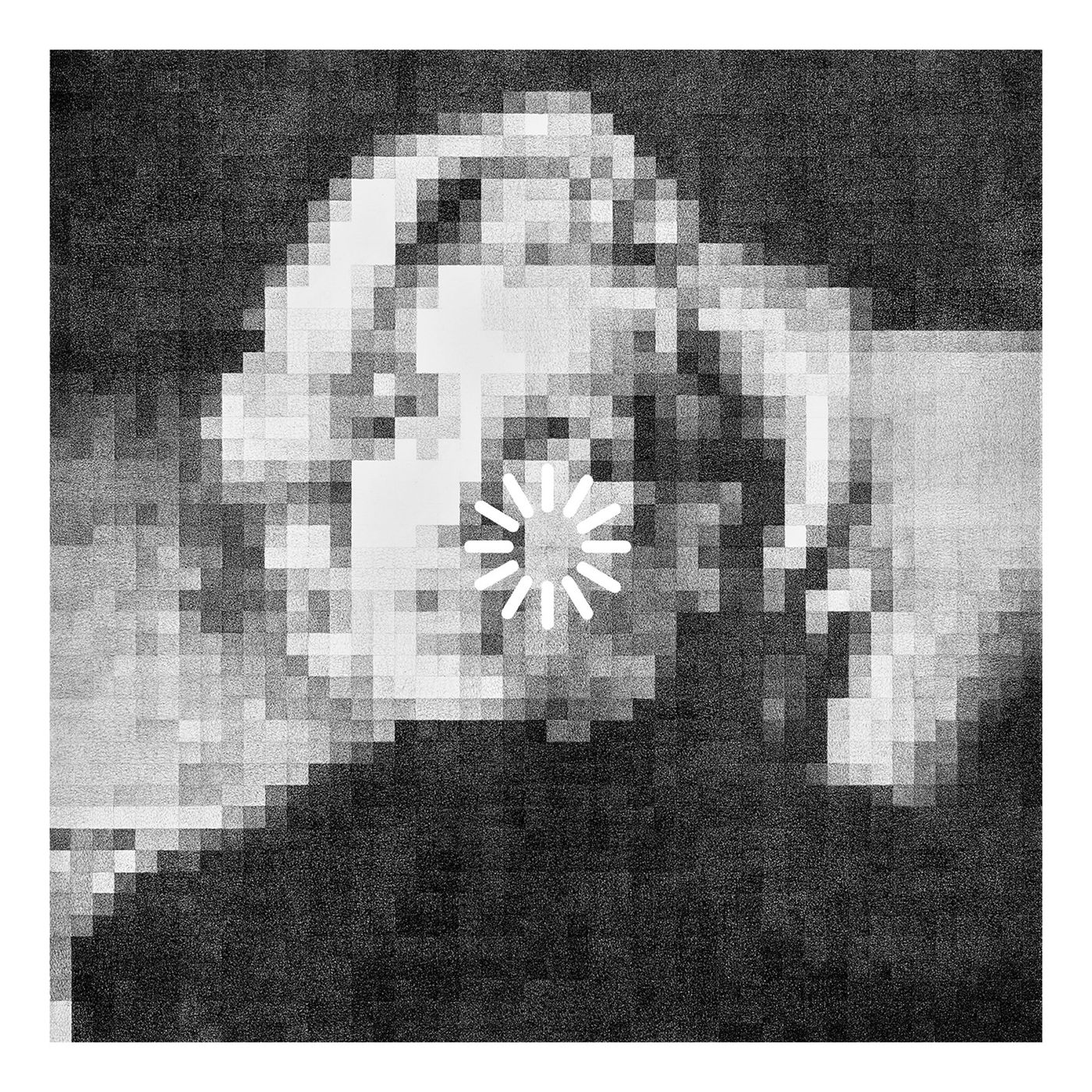
Maestro, Loading Marilyn. Photography by Maestro.

Artist portrait working at his studio.
Each piece in the LOADING series is a quiet spectacle of labour. Rendered entirely by hand, a painstaking, time-consuming process, the works are in the artist’s words “an attempt to strip iconic subjects down to their essential architecture by passing them through the filter of a black pen on white paper.” His architectural background lends a sculptural intentionality to his drawings: lines are both delicate and determined, resulting in works that feel almost paradoxical given the digital disarray of his subjects.
This stark simplicity is not just aesthetic—it’s philosophical. In an era of oversaturated, algorithmically optimized imagery, MAESTRO’s minimalism reads like a form of resistance. For all their visual restraint however, these pieces aren’t static. Many of them include augmented reality components—QR codes that usher viewers into shifting digital environments. This interactivity extends MAESTRO’s inquiry into how we perceive and engage with images, begging the question: What does it mean to “know” an image when it’s been pixelated, filtered, repurposed, and looped into cultural infinity?
Making of: Maestro, Loading exhibition at Homme Gallery.

Maestro, Loading Great Wave (detail). Photography by Maestro.
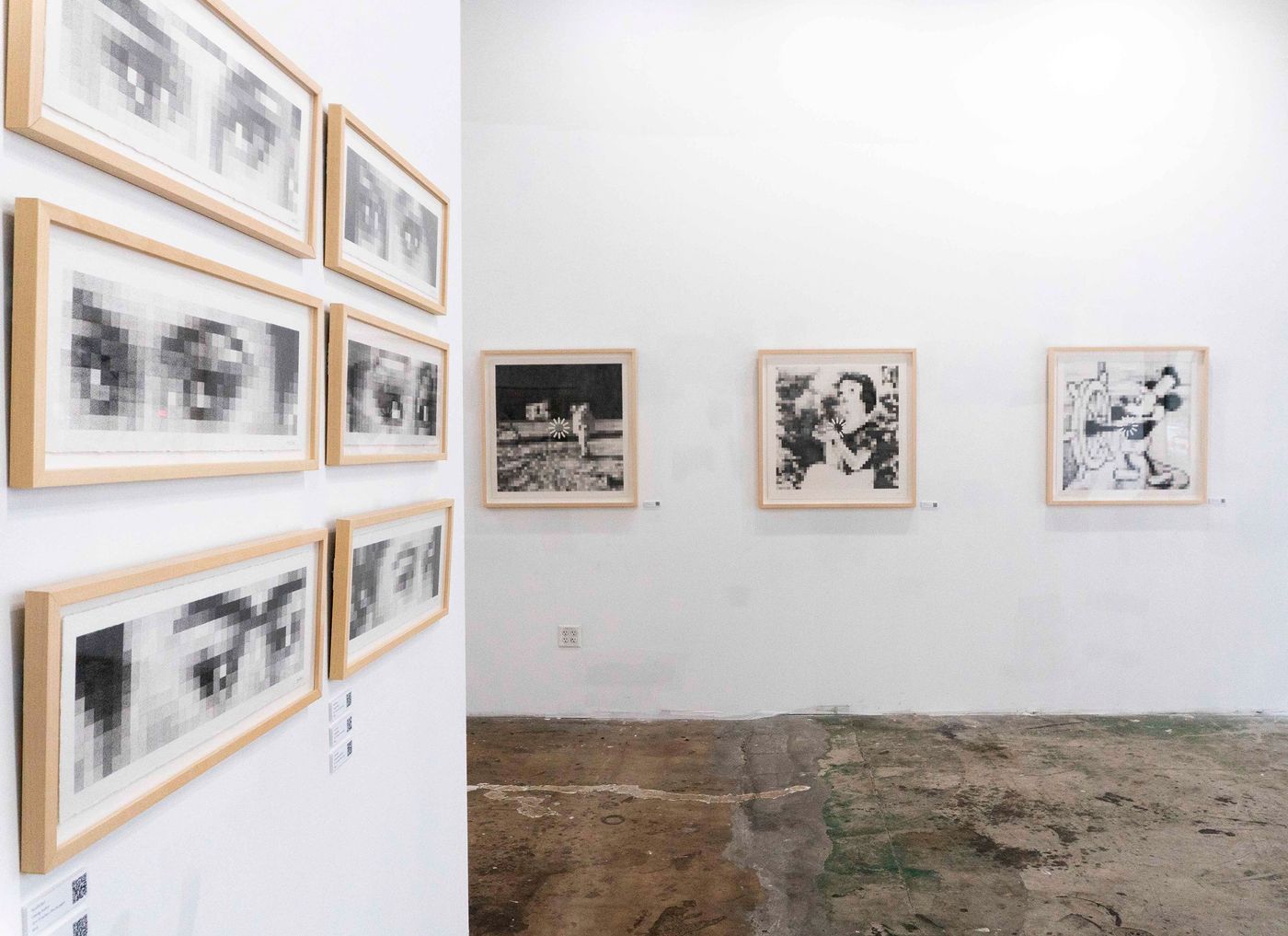
Exhibition view, Loading by Maestro at HOMME Gallery, Washington DC, Apr 3 – 24, 2025. Photography by Maestro.
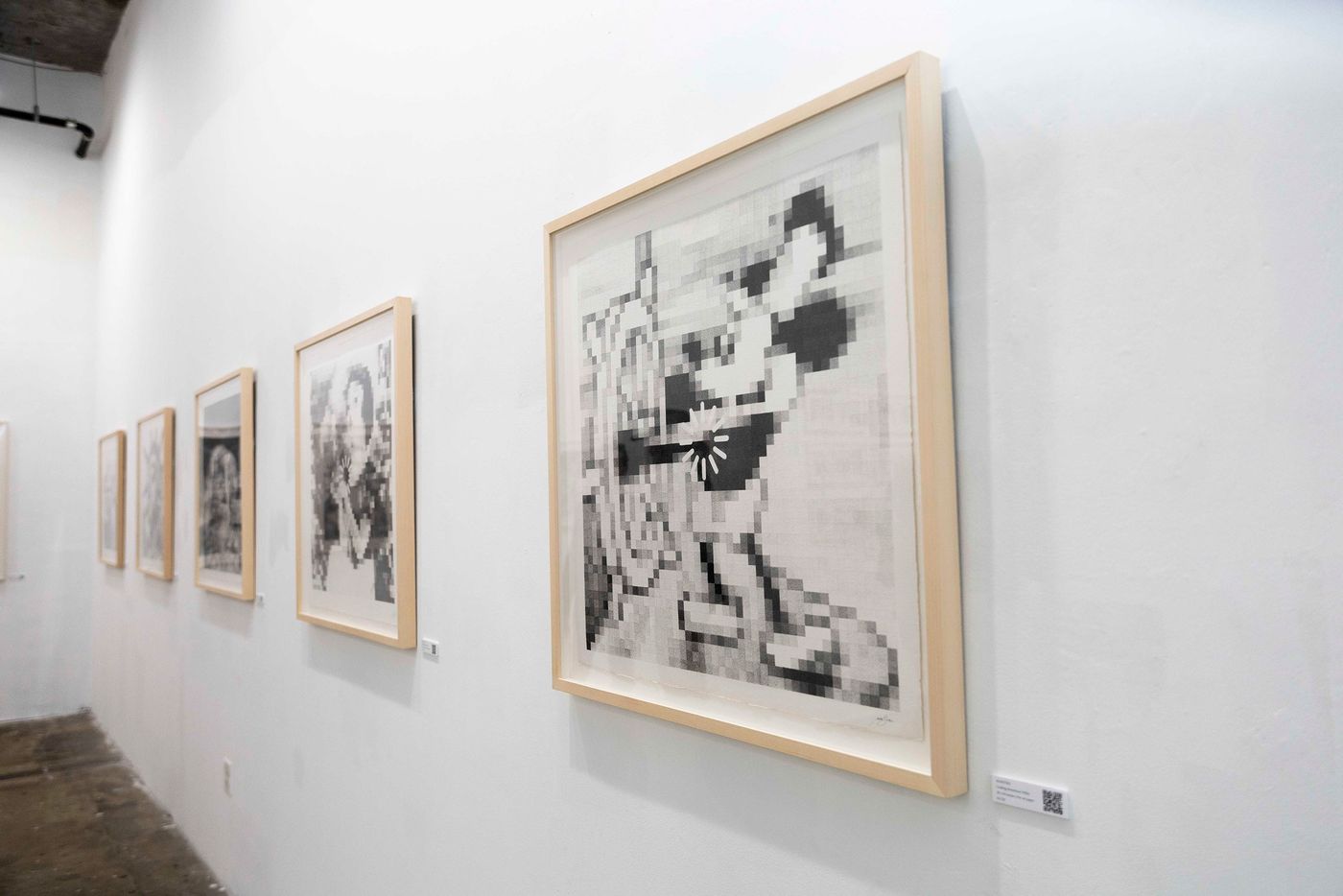
Exhibition view, Loading by Maestro at HOMME Gallery, Washington DC, Apr 3 – 24, 2025. Photography by Maestro.
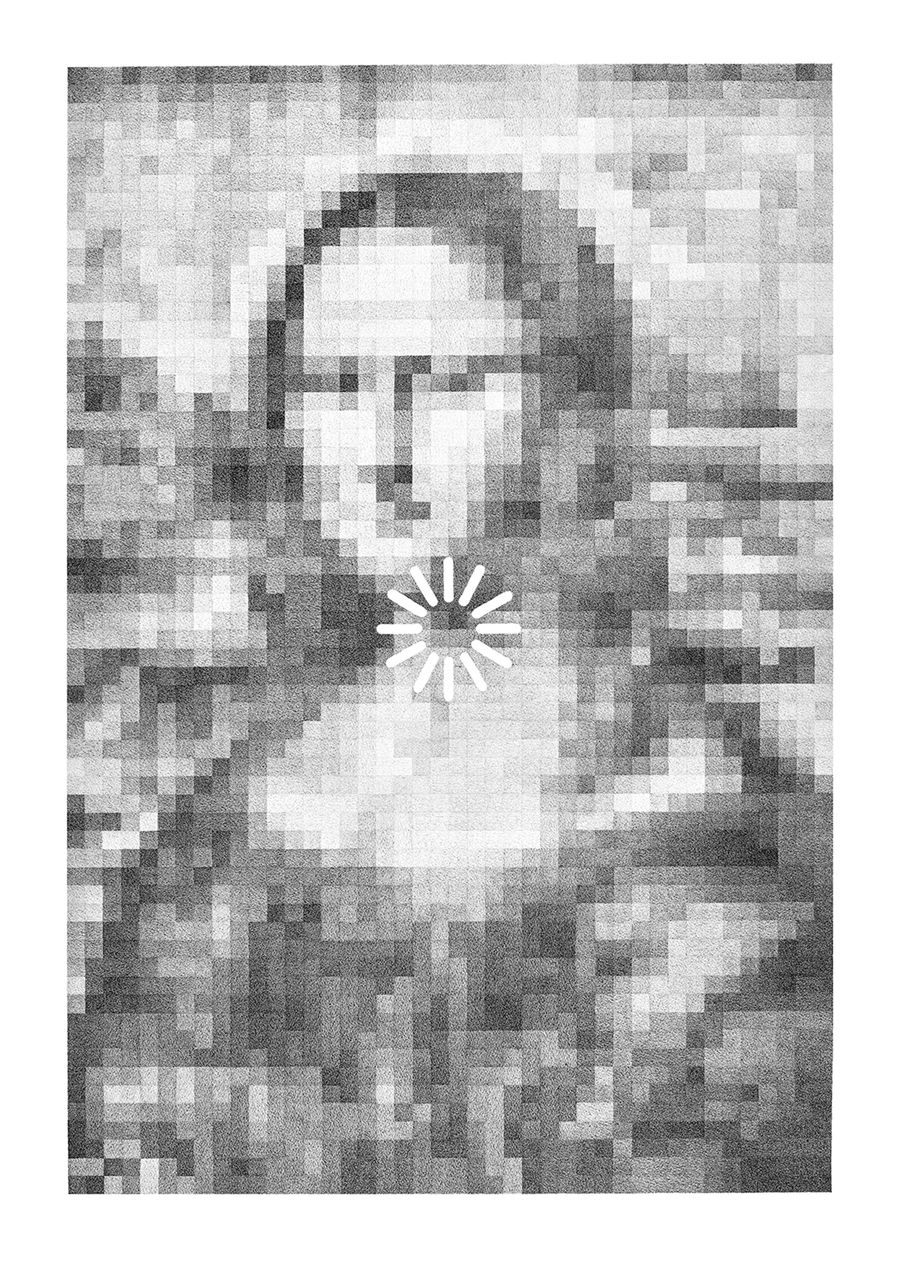
Maestro, Loading Mona Lisa. Photography by Maestro.

Maestro, Loading Mona Lisa (detail). Photography by Maestro.
Perhaps the most literal manifestation of this question is Glitching – Venus, MAESTRO’s first foray into sculpture. A resin reinterpretation of the Venus de Milo, the piece transforms classical beauty into a jagged, digital silhouette—frozen mid-buffer. It signals a bold new chapter in the artist’s practice, expanding his visual dialect from two to three dimensions while remaining tethered to the same conceptual nucleus: what is lost and what is revealed when images are filtered through the glitchy veneer of the digital age.
At HOMME Gallery—a D.C. arts space known for championing multimedia innovators—MAESTRO’s work feels right at home. There is a strange serenity to LOADING, as though the perpetual buffering state has become less a failure of technology and more a metaphor for our era: one that is always reaching, but never arrives.
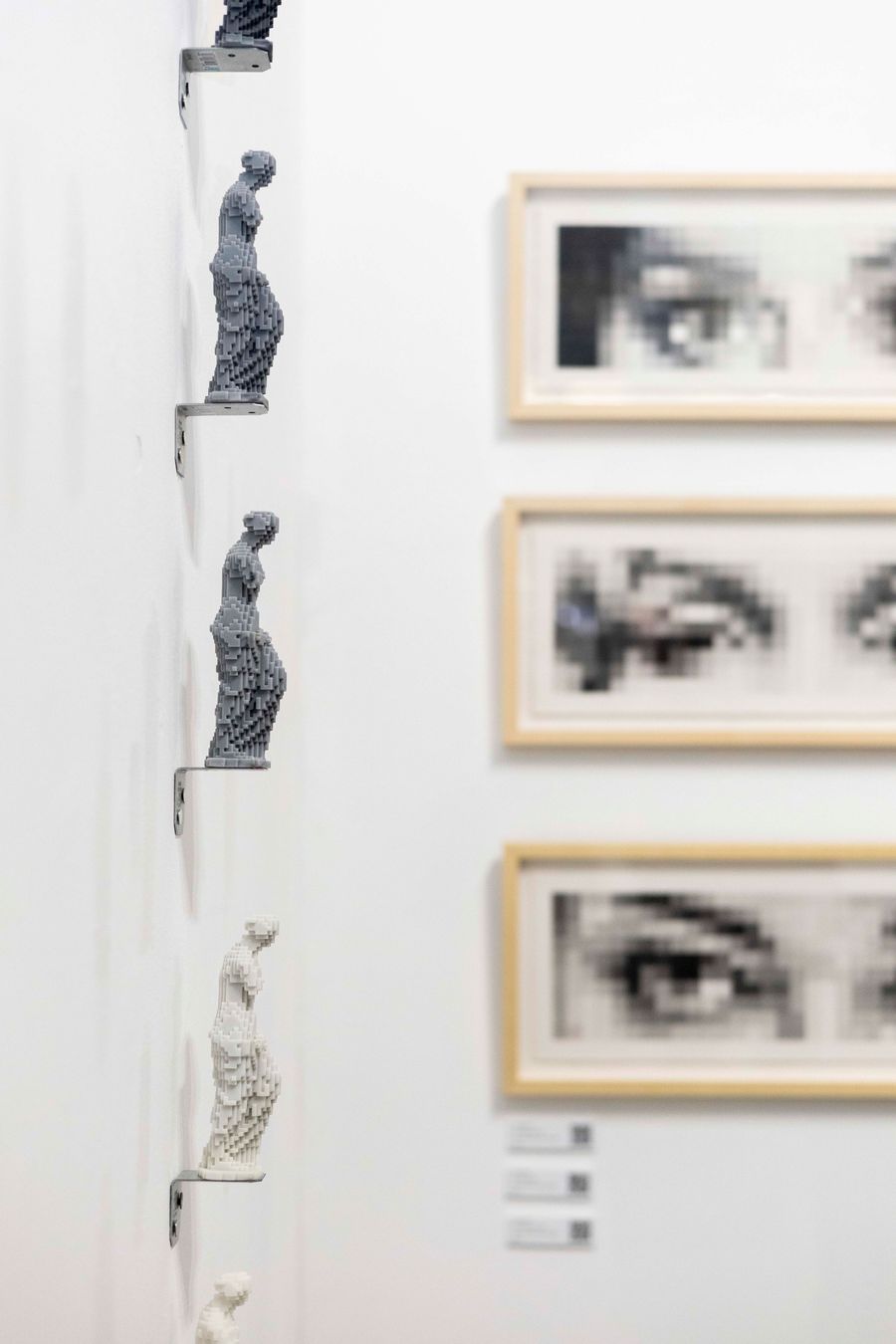
Exhibition view, Loading by Maestro at HOMME Gallery, Washington DC, Apr 3 – 24, 2025. Photography by Maestro.
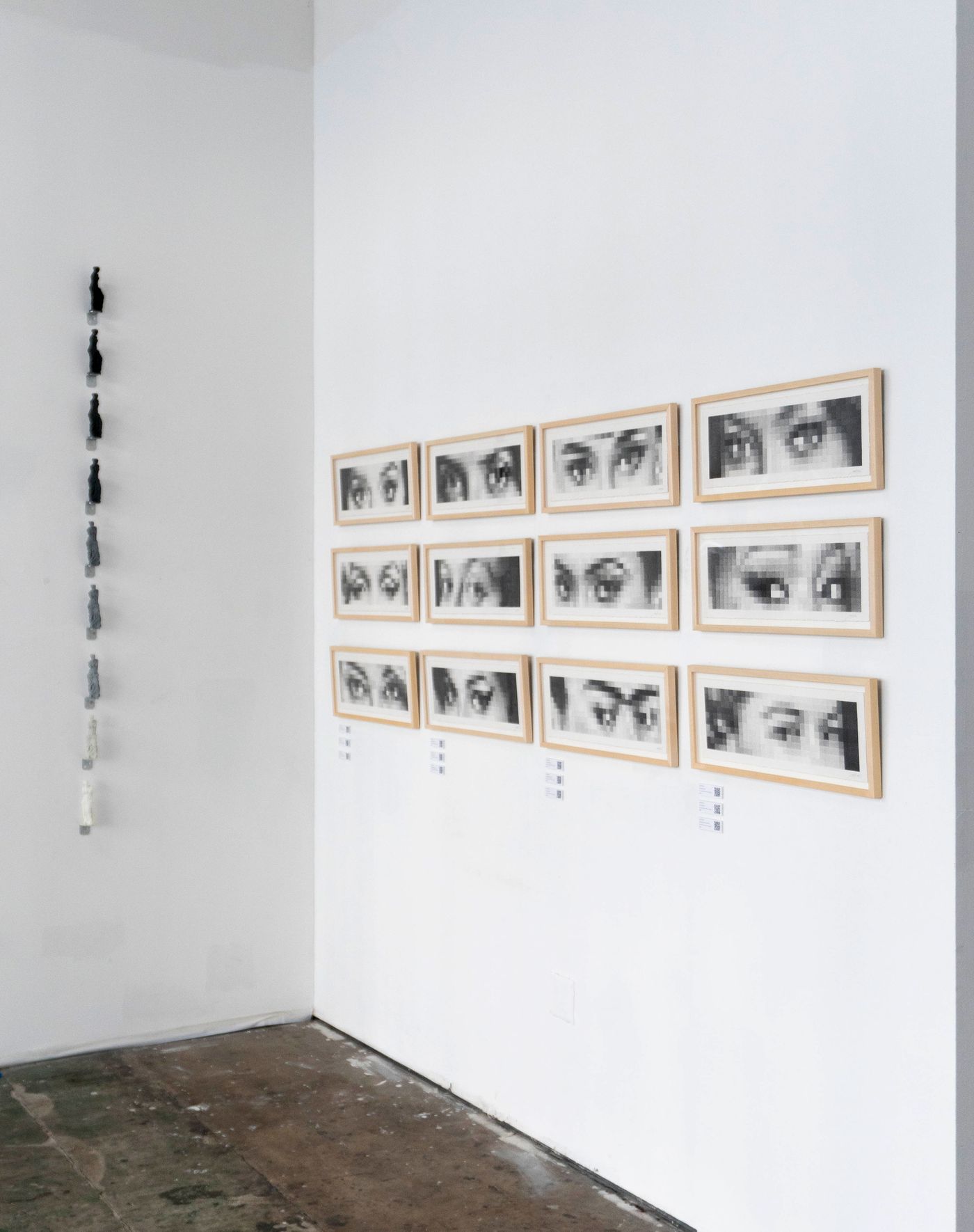
Exhibition view, Loading by Maestro at HOMME Gallery, Washington DC, Apr 3 – 24, 2025. Photography by Maestro.
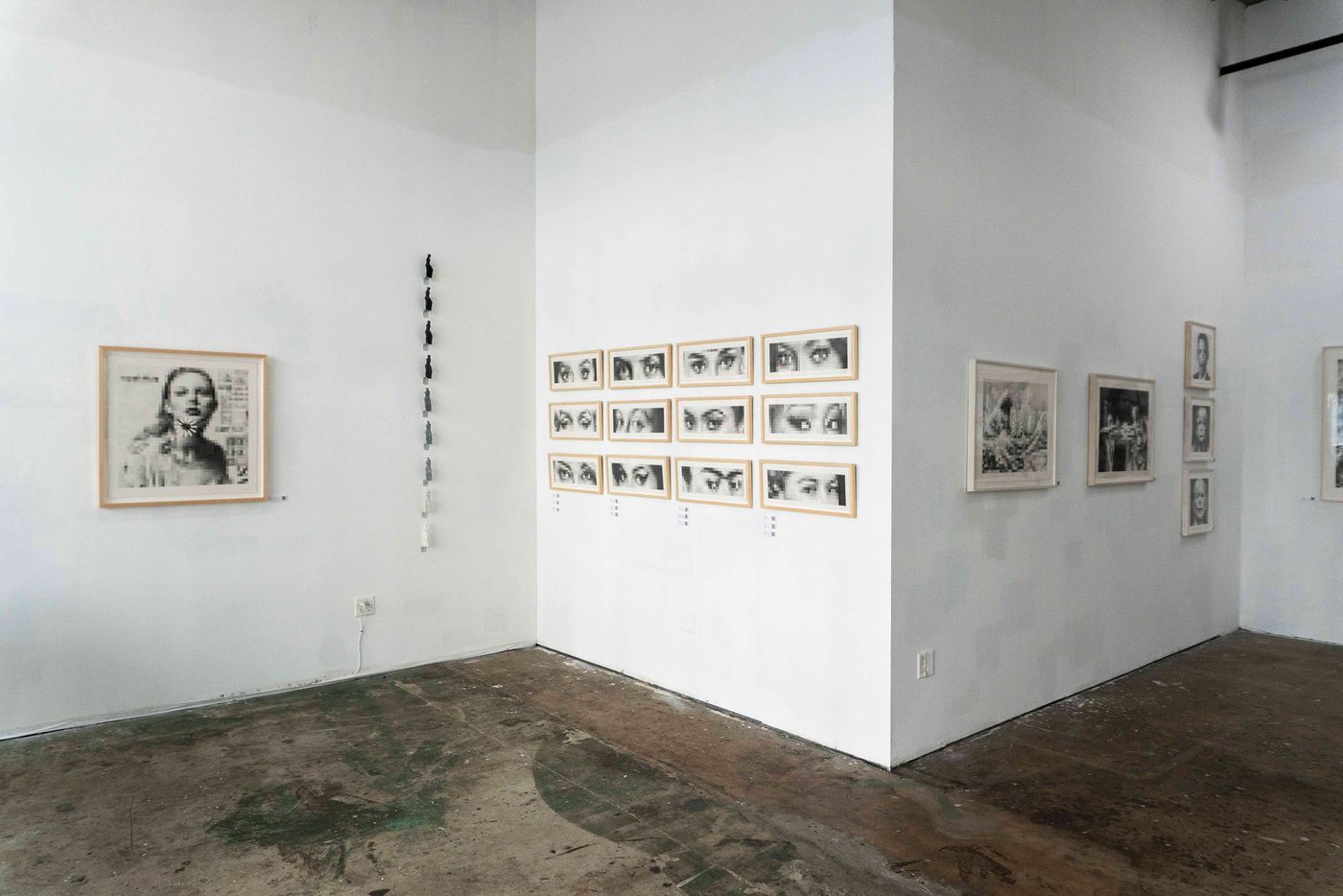
Exhibition view, Loading by Maestro at HOMME Gallery, Washington DC, Apr 3 – 24, 2025. Photography by Maestro.
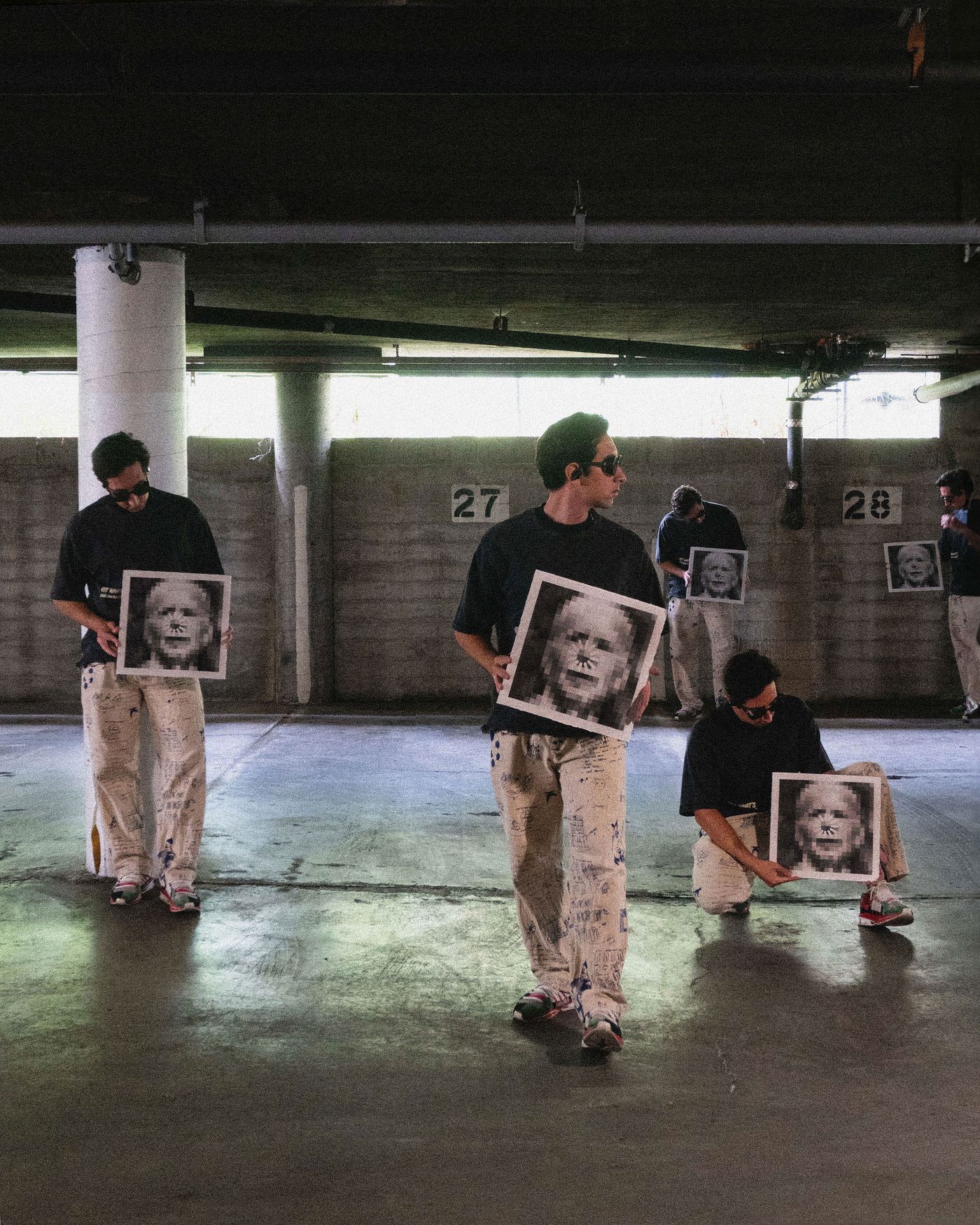
Maestro, Biden Multiverse. Photography by Maestro.
